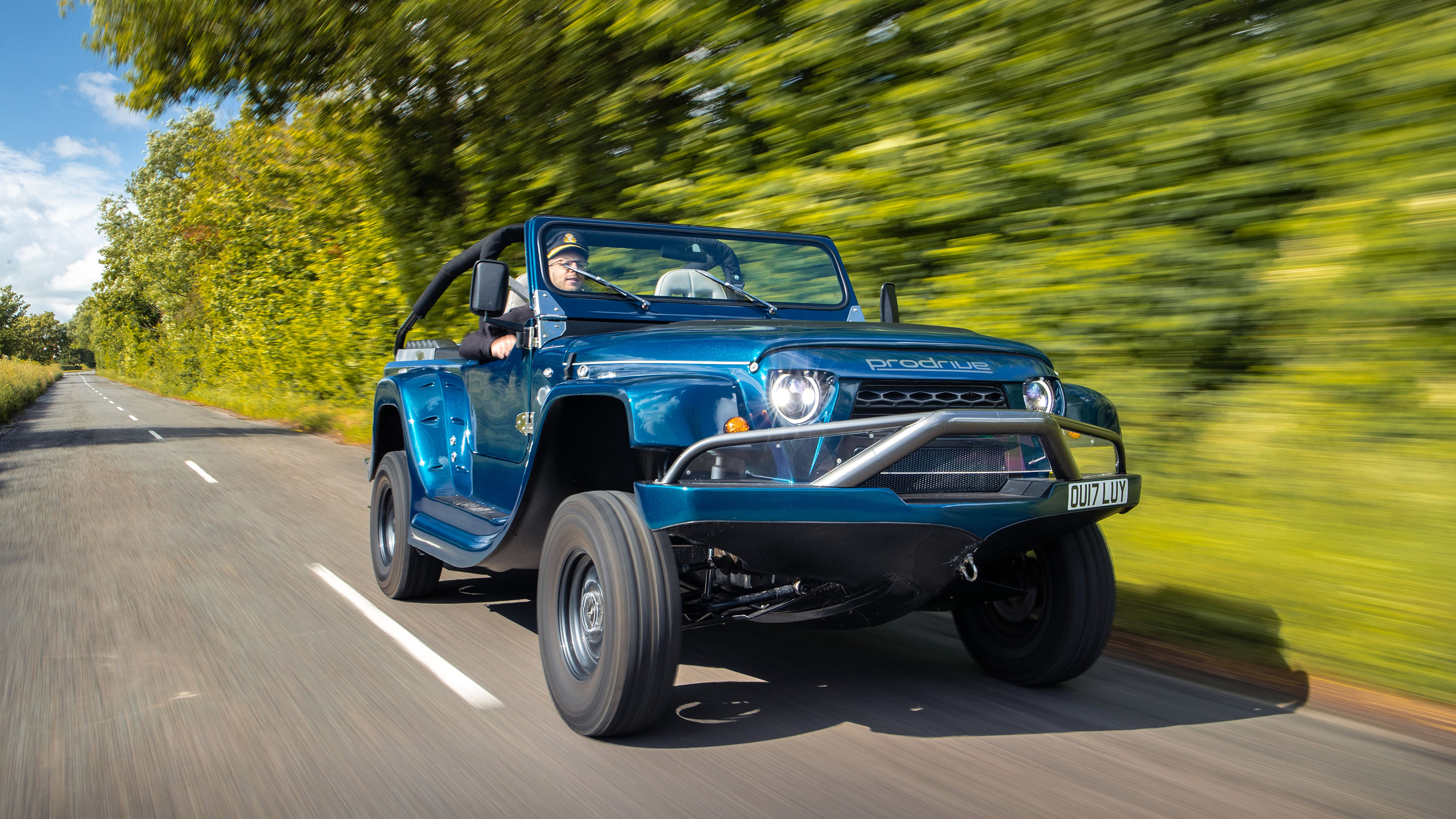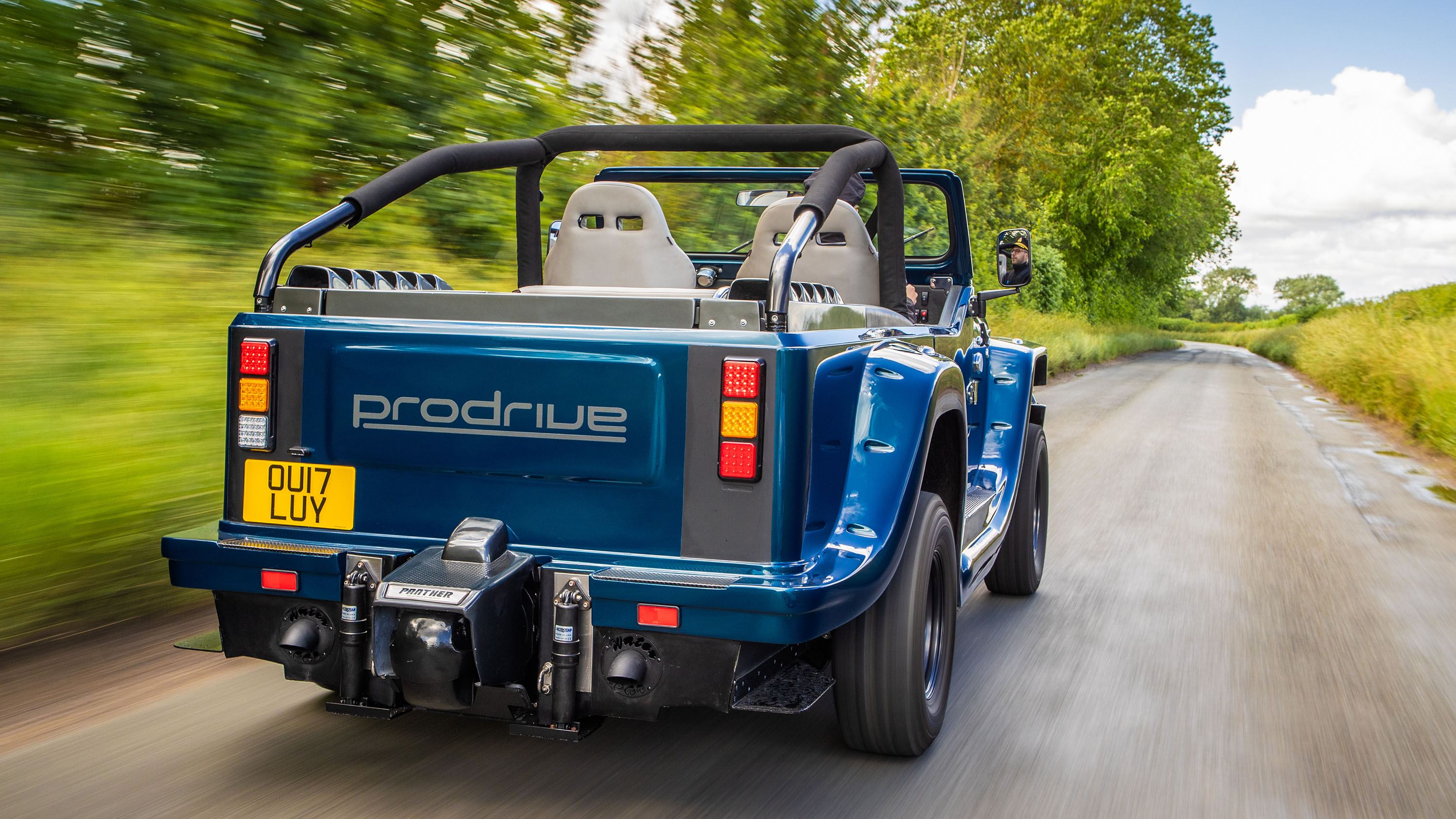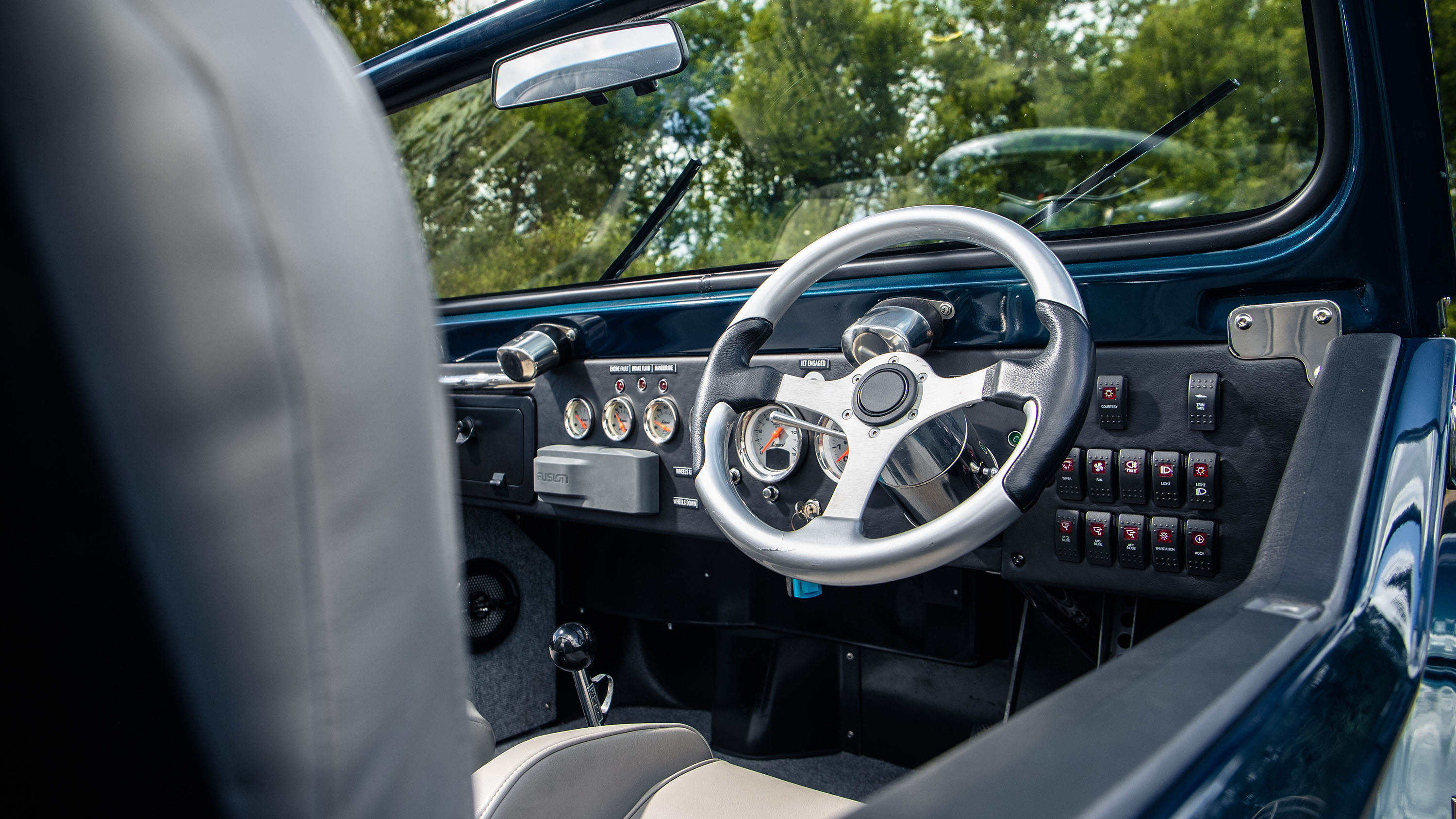
Prodrive WaterCar Panther review
Driving
What is it like to drive?
As anyone who’s ever tried to eat a disappointing campsite breakfast with a spork will tell you, or you’ll know if you ever owned a pen that was also a torch and an alarm clock, things that try to be two things tend not to be as good at either thing as things that concentrate on being one thing alone.
Case in point: the WaterCar Panther. To drive, frankly, it’s a bit of a tugboat. You know how seals and penguins look graceful and balletic in water but hopelessly awkward on the shore? This is the wallowy, wayward four-wheeled equivalent.
Prodrive’s quest to polish this rough diamond has mainly centred around improving the engine cooling and the fibreglass hull’s various seals to stop it, y’know, filling with water and sinking faster than a Jeep Wrangler in quicksand. What they’ve not been able to counter is the Panther’s arse-heavy weight distribution.
What’s actually powering it?
In the back, behind the rear axle, lies a 3.7-litre Honda V6, used in US-market Acuras. Because both it and the ‘Panther’ jet drive for water-borne propulsion are tacked on the rear, the Panther rears up if asked to accelerate briskly. Prodrive’s engineers say it’ll actually pull wheelies, particularly when the front-mounted fuel tank starts to drain. I believe them.
The engine, good for about 300bhp, starts on a diminutive key and sounds fierce. There’s an ever-present aroma of unburnt fuel vapours wafting around. Being normally aspirated, throttle response is zippy, the V6 rasp deafening. The four-on-the-floor gearbox is hopelessly vague, but luckily there’s enough torque for you to just set up camp in third and pretty much leave it alone.
Is it any good on the road?
No. This not a car to drive briskly.
Those enormous Barbie Jeep wheelarches are invisible from the sit-up-and-beg captain’s chair, so you’ve got to remember the thing is a heck of a lot wider than the extremities you can actually see. Though it’s relatively light for its size at 1,338kg, it behaves with the slow-motion reflexes of something that weighs over two tonnes.
Lawd knows how cumbersome it was before a world-class motorsport fraternity gave it the Rule-Britannia once-over, but suffice to say the combination of knobby marshmallow tyres and surprisingly direct, heavy steering make cornering (or should that be ‘attempts to change course’) rather lively. This isn’t really a car in which you can rest an elbow on the door top and cruise. You’ve got to babysit it.
Special mention for absolute terror goes to the brakes. Through the wheel spokes, you read ‘Wilwood Racing’ on the front calipers (the rears are off a Hyundai, with bigger pads) and you think ‘mmm, pedigree’. But you’d be better off raising a mainsail and hoping for a headwind if you need to come to an abrupt halt.
Prodrive’s engineers are well aware of this. They freely admit that this isn’t a car you’d drive long distances in, packed up for the family holiday. It’s more of a convenience if you live near a river, lake or the sea. Instead of having to lash your boat to a trailer, pass your towing test and go through all that pesky unloading, the WaterCar can simply be pottered down to your nearest slipway or beach and driven straight out into the water, to the utter amazement and audible distress of anybody spectating.
The makers recommend entering the water at no more than 15mph. Hah, good one. Try 1.5mph. It’s a truly bizarre feeling to be sat in a car, with a rear-view mirror and a steering wheel and a gear lever, only to deliberately drive it straight into a body of water. Avoid a bow wave washing up over the bonnet and, once you’re safely bobbing, it’s time to convert into boat mode.
How do you get ready to go motorboating?
First things first, select neutral. Then hold a button marked ‘wheels up’ until there’s a beep. This hydraulically lifts all four wheels and tucks them up into the arches so they’re not dragging along in the water. The reason selecting neutral is so important is this process will otherwise bend the driveshafts. Yikes.
Next, prod the button for lowering the trim planes. We’ll come back to what those are for, but trust me, it’s important. Finally, tug a lever next to the handbrake to engage jet drive. This activates a power take-off from the V6, which is now running the water propulsion jet. No more than fifteen seconds after wading into the drink, the Panther is now ready to swim.
Is it better at being as boat than a car?
Emphatically. It’s absolutely magic. And delightfully simple: just mash the throttle. The trick is to hold the revs at 6,000rpm as the craft accelerates and then feather it down to 5,000rpm once the boat comes ‘on plane’. In waterspeak, the fins you lowered earlier are now acting as submerged wings.
This hydrodynamic lift overcomes the car’s buoyancy and lifts much of the hull out of the water, decreasing drag and allowing more manoeuvrability. And speed. The sense of the Panther rising up off the surface and then skipping along the top at 30 knots is tremendous. Suddenly, this ungainly car-goyle is a picture of grace and balance.
Apparently, this engine is bulletproof. It feels alien – if you’ve a molecule of mechanical sympathy – to keep your foot planted with the revs singing away at 5,000rpm, but Prodrive promise they’ve flooded this motor and kept it pinned to the redline until it’s smoking, and it stubbornly refused to break down. It’s idiotproof, Top Gear can confirm.
Handling? Well, that’ll be familiar if you’ve ever done any slippery surface ice driving. You gracefully swing from one 'drift' to the next, constantly countersteering into the ‘slide’. Except when you lift off the throttle, instead of spinning out, you drop ‘off plane’ and settle down back into the water like a crocodile.
At this point, any water that’s collected under the bonnet will slosh forward into the hot radiator, and conceal the Panther in a furious hiss of steam. Consider it an impromptu smokescreen, like an old battleship evading aircraft fire. This is a feature the market has been sorely lacking since the domestic British car industry folded.
The Panther gets what true boatswains technically term ‘a right-old lean on’ if a hard-to-port/hard-a-starboard zig-zag is ordered. Prodrive does warn of ‘some stability issues’ inherent to the sledgehammer-ish weight distribution, but for a complete novice, it’s no harder to commandeer than a jet ski. We didn’t sink once.
Some habits – like stabbing the brake pedal when the shore looms close and wondering why you’re still on a collision course with Oxfordshire – take a little while to unlearn. Keeping the wipers on is a top tip. And try not to run over your own wake – the Panther will pull a wheelie in choppy waters as well, as it turns out.
To end your voyage, perform the same button presses in reverse. Disengage the jet drive lever, raise the planes, don’t forget to drop the wheels to prevent embarrassing graunches, and then gingerly slot in first gear. Get lined up with the slipway and you’ll execute a flawless dismount from the deep and straight onto the shore with the coolness of Sir Roger Moore and the swagger of Captain Jack Sparrow.
Featured

Trending this week
- Top Gear's Top 9
Here are nine of the coolest car nicknames






